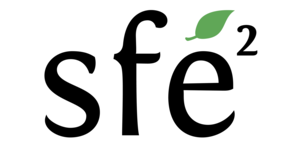Supervisors:
– Laura Recuero Virto, EMLV(laura.recuero_virto@devinci.fr)
– Francesco Salvarani, ESILV(francesco.salvarani@devinci.fr)
(in collaboration with Cédric Beraud from the Association Francis Hallé which prones for the development of the conditions for the rebirth of a primary forest in Western Europe)
Context and motivation:
Primary forests are becoming rare as forestland globally is cleared for agriculture or put under active management (Mackey et al., 2015). Given their irreplaceability and unique qualities, protecting primary forests is a global concern (Mackey et al., 2015). Here, ‘primary forest’ refers to the FAO definition (Barredo et al., 2021), as any forest with natural dynamics (i.e., natural tree species composition, occurrence of dead wood, natural age structure and natural regeneration processes), where there are no clearly visible indications of human activities and with sufficient area to maintain the natural ecological processes and where these processes are not significantly disturbed. Primary forests are an irreplaceable part of our natural heritage (IUCN World Conservation Congress 2020) with unique qualities that make significant contributions to biodiversity conservation, climate change mitigation, and sustainable livelihoods (Gibson et al., 2011). In Europe, the existence of the largest primary forests is highly threatened and their distribution is uneven, mainly located to the east, in Poland, Ukraine, Czech Republic, Croatia, Slovenia, Romania, Bulgaria and Finland (Sabatini et al., 2018).
The initiative led by Francis Hallé (2021) seeks to create the conditions for the rebirth of a primary forest in Western Europe, with the goal of allowing to evolve and protect a large forest area without human intervention for centuries. This project is in accordance with the strategies and ambitions of the ecological transition at all levels of public policy, whether international, European or French, particularly regarding biodiversity and forests protection. Two cross-border sites are currently under consideration: North Vosges (France)/Rhineland-Palatinate (Germany), and the Franco-Belgian Ardennes.
To succeed, it is crucial to assess the socio-economic impact on local communities, including potential revenue losses from traditional activities such as logging and hunting, alongside the benefits of new activities such as eco-tourism and recreational services, and scientific and educational activities.
Objective of the internship:
The primary objective is to conduct a cost-benefit analysis of the rebirth of a primary forest in Western Europe and, optionally, a forecast of its ecological evolution using integro-differential equations. Specifically, the intern will:
– Analyze economic losses from traditional activities and potential gains from alternative activities such as scientific, educational, and artistic activities, agroforestry, eco-tourism and recreation, and ecosystem services (e.g., carbon sequestration, biodiversity conservation, and soil enrichment, air and water quality) (Verdone, 2015; OECD, 2018).
– Optionally, develop a mathematical model to forecast the ecological evolution of the forest over time. This model will simulate the forest’s regeneration process and long-term ecological benefits.
Combining mathematical forecasting with a cost-benefit analysis is essential because mathematical models provide detailed insight into the forest’s long-term ecological and economic outcomes. These forecasts help to anticipate the pace of ecological recovery and allow for a more accurate assessment of when the benefits of ecosystem services will outweigh short-term economic losses, leading to more informed policy decisions and greater stakeholder engagement. This intership will be developed in the framework of the De Vinci Higher Education (DVHE) mission on sustainable development and represents a collaboration between the management (EMLV) and the engineering schools (ESILV).
Profile sought:
– Master’s student (M2) in engineering, management, economics, geography, or related fields.
– Familiarity with economic concepts, interest in cost-benefit analysis.
– Optionally: Familiarity with mathematical tools for forecasting ecosystem dynamics, including differential equations and numerical methods.
Deliverables:
– A comprehensive cost-benefit analysis report.
– Optionally: A mathematical model describing the ecological evolution of the forest.
– Recommendations for stakeholders and policymakers, balancing ecological enhancement and economic sustainability.
Duration:
6 months, starting in February-April 2024.
Location:
De Vinci Research Centre, 12 Av. Léonard de Vinci, 92400 Courbevoie.
Application:
Candidates should send a CV, cover letter, and academic transcripts to the supervisors at the email addresses above.
References:
Gibson, L., Lee, T. M., Koh, L. P., et al. (2011). Primary forests are irreplaceable for sustaining tropical biodiversity. Nature, 478, 7369, 378-381.
Hallé, F. (2021). Pour une forêt primaire en Europe de l’Ouest. Actes Sud (in French; for information in English: https://www.foretprimaire-francishalle.org/en/project-restoring-a-primeval-forest-in-western-europe/).
IUCN World Conservation Congress 2020. https://www.iucncongress2020.org/motion/125.
Mackey, B., DellaSala, D. A., Kormos, C., Lindenmayer, D., Kumpel, N., Zimmerman, B., Watson, J. E. M., et al. (2015). Policy options for the world’s primary forests in multilateral environmental agreements. Conservation Letters, 8, 139–147.
OCDE (2018), Cost-Benefit Analysis and the Environment: Further Developments and Policy Use, OCDE Publishing, Paris, https://doi.org/10.1787/9789264085169-en.
Sabatini, F. M., Burrascano S., Keeton W. S., Levers C., Lindner M., Pötzschner F., Verkerk P. J., et al. (2018) « Where Are Europe’s Last Primary Forests? » Édité par Franz Essl. Diversity and Distributions 24, 10, 1426 39. https://doi.org/10.1111/ddi.12778.
Verdone, M. (2015). A cost-benefit framework for analyzing forest landscape restoration decisions. Gland, Switzerland: IUCN, 42.

Commentaires récents